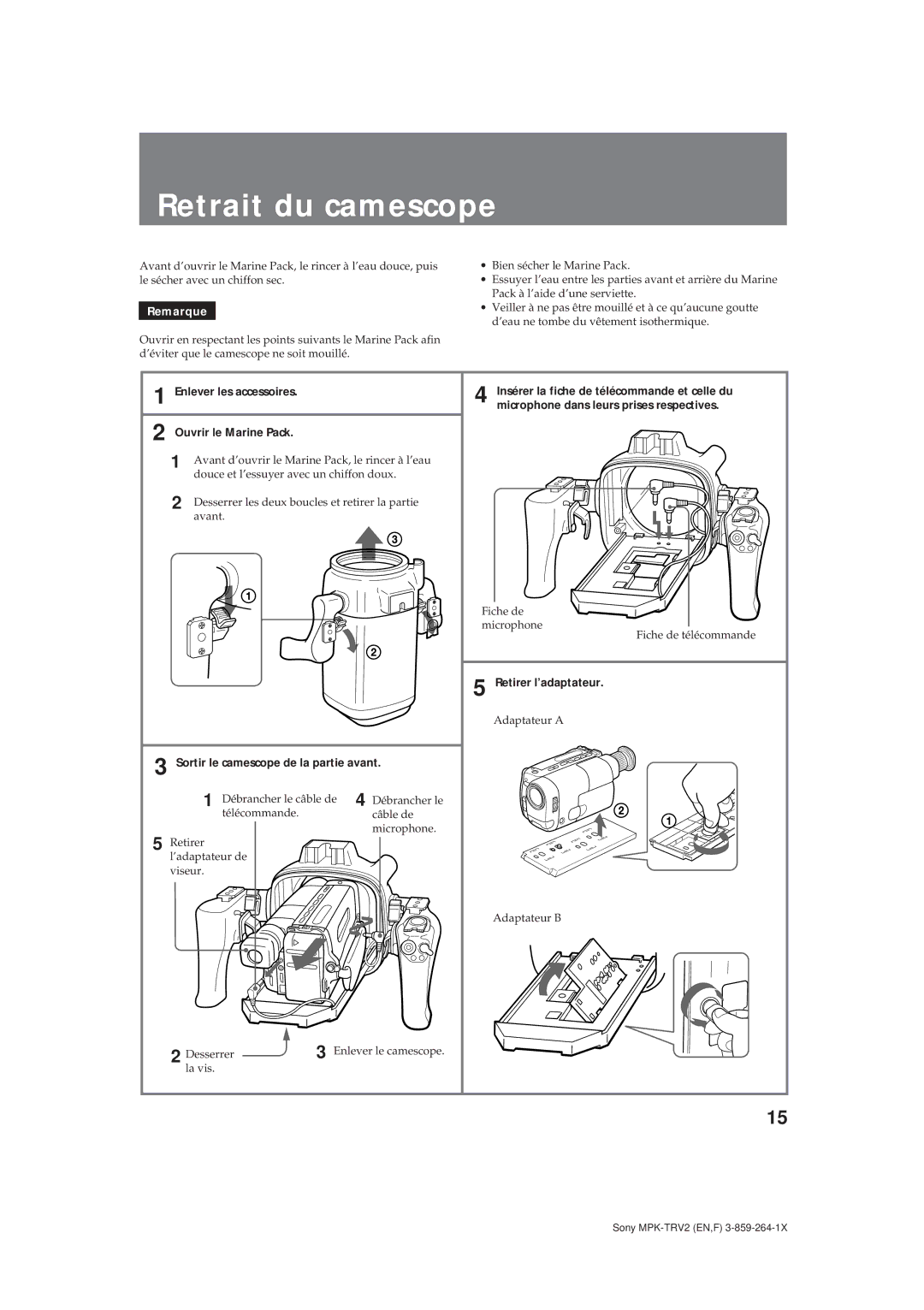MPK-TRV2 specifications
The Sony MPK-TRV2 is an underwater housing designed for select Sony camcorders, allowing videographers to capture stunning footage beneath the waves. This innovative accessory provides a seamless solution for enthusiasts looking to explore underwater photography and videography without compromising the performance of their equipment.One of the main features of the MPK-TRV2 is its robust construction. Made from high-quality materials, the housing is designed to withstand the pressures of underwater environments. With a depth rating of up to 40 meters (approximately 130 feet), users can confidently dive deep and capture vibrant underwater scenes without the fear of damaging their camcorders.
The housing incorporates a clear polycarbonate shell, enabling clear visibility of the camcorder's LCD screen, allowing for easy framing of shots and monitoring of recordings. Additionally, the housing features an ergonomic design with easy-to-access controls that mimic the camcorder's buttons, ensuring that users can operate their device effortlessly even while wearing gloves.
Another significant characteristic of the MPK-TRV2 is its integrated lens port that allows for the use of wide-angle conversion lenses. This feature expands the shooting capabilities, giving videographers the ability to capture expansive underwater landscapes or close-up shots with enhanced detail. The housing is also equipped with a built-in filter that helps in color correction, particularly important for underwater shooting where colors can be muted or altered by the water.
For those worried about accessibility and compatibility, the MPK-TRV2 is designed specifically for certain models of Sony camcorders, ensuring a snug fit and reliable performance. The installation of the camcorder into the housing is user-friendly, enabling quick setup so that users can transition from above-water shooting to underwater adventures smoothly.
In terms of technology, the MPK-TRV2 supports the latest in Sony’s imaging advancements, allowing users to record in high-definition quality, ensuring that the underwater scenes are captured with crisp clarity and vibrant colors. This compatibility with advanced recording formats makes it a vital tool for professional and amateur videographers alike.
In summary, the Sony MPK-TRV2 emerges as an essential accessory for underwater videography. Its durable construction, user-friendly design, compatibility with wide-angle lenses, and ability to capture stunning high-definition footage highlight its role in enhancing the underwater filming experience. For anyone looking to delve into the aquatic world of photography and videography, the MPK-TRV2 is an investment that promises to unlock creative possibilities beneath the surface.

